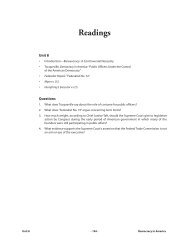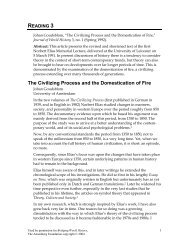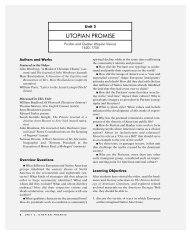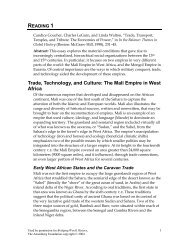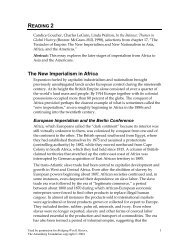Create successful ePaper yourself
Turn your PDF publications into a flip-book with our unique Google optimized e-Paper software.
Kashmiri products had to compete with shawl cloth designed specifically for<br />
Iranian consumption, woven by artisans in Kerman, Mashad, and Yazd. For<br />
example, in 1849–50, Kerman alone had 2,200 looms for weaving shawls<br />
along with looms for woolen cloth, together producing approximately £40,000<br />
to 45,000 worth of goods (Abbott quoted in Issawi 1971, 267). Jakob Polak, a<br />
German physician who lived in Iran in the 1850s, wrote that “Persian<br />
shawls… are comparable in design and color to those of Kashmir, but are far<br />
inferior in suppleness and closeness of weave.” Kermani shawls, reported<br />
Polak, were exported to “Constantinople and Alexandria,” while those made<br />
at Yazd were sent to “Constantinople and Russia” (cited in Issawi, 269, 271).<br />
Until the early twentieth century, Kermani and Kashmiri shawl cloth<br />
continued to be used by the Qajar court in Iran as gifts from the shah to those<br />
he wished to honor, as formal attire for members of the court, and as shrouds<br />
for the wealthy (Scarce, 33; Bier, 31).<br />
The Kashmiri shawl trade in Asia was often disrupted by political turmoil in<br />
the seventeenth and eighteenth centuries, and by the heavy tax demands of the<br />
Afghan and Sikh regimes that conquered Kashmir. By the last decades of<br />
Mughal Emperor Aurangzeb’s reign (1658–1707), imperial attention and<br />
military strength had shifted south, and northern shawl merchants were forced<br />
to alter their trade routes according to the less secure times. The Sikh armies of<br />
Maharaja Ranjit Singh (1781–1839), whose kingdom centered on the Punjab<br />
plains, conquered Kashmir in 1819. Contemporary European travelers wrote in<br />
[End Page 34] amazement about the lavish decorative use of Kashmiri shawls<br />
and shawl cloth at Maharaja Ranjit Singh’s court in Lahore in the 1840s. 13 The<br />
Maharaja encouraged Kashmiri weavers to settle in Punjabi cities, and he used<br />
shawl cloth to pay allowances to his followers, to grant robes of honor, and to<br />
send gifts to other rulers, including officials of the British East India Company<br />
(Bajwa 1982, 236-37; Datta 1970; Ahad 1987, 103–104).<br />
Asian trade in Kashmiri shawls thus antedated the British conquest of India<br />
by several centuries, and Kashmiri shawls retained their capital as valued<br />
gifts in local regimes after the British Raj was established. Yet, Eurocentric<br />
textile histories of this early trade, treating it as merely the background for the<br />
later trade with Europe, focused on the supposed non-Kashmiri origins of the<br />
characteristic shawl designs and weaving techniques rather than the Asian<br />
trade itself. The Asian trade continued to carry shawls overland from<br />
Kashmir to their widespread sites of consumption well into the nineteenth<br />
century. I argue below that the Asian trade was at least as important as<br />
European demand for changes in the production of Kashmiri shawls.<br />
Used by permission for Bridging World History, 6<br />
The Annenberg Foundation copyright © 2004



